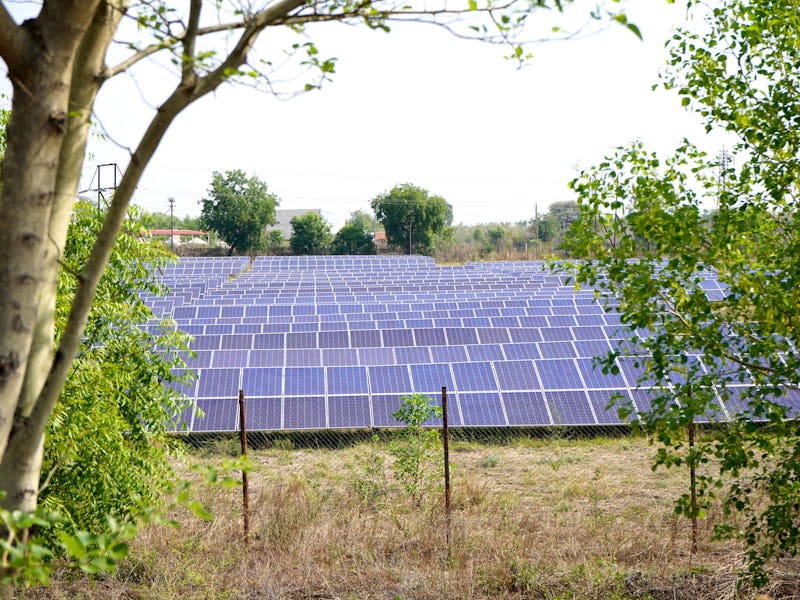Scientists find Covid-19 has a surprising domino effect on cities
Solar panels get weaker when air pollution makes the sky hazy. But when coronavirus stopped traffic, panels started to reap the benefits.

By this point, it’s almost cliche to point out how coronavirus and Covid-19 have completely rearranged the world since the beginning of 2020. But the pandemic that shuttered sports, religious events, music festivals, and public events of all varieties has had aftershocks that nobody could have predicted. Like getting increased energy from solar panels, according to a new study published in Joule last month.
Solar panels convert the sun’s rays into electricity, of course. But all the way back in 2013, research scientist Ian Marius Peters began wondering if air pollution could interfere with that conversion process after seeing a city wrapped within the thick haze of a forest fire. Studying Delhi, India, in 2018 Peters was able to prove that heavy air pollution could reduce the power of a solar panel by at least 12 percent.
But then came that globeshaker, Covid-19. As restaurants and stores closed, and as governments pleaded with their residents to stay inside, cities around the world saw their daily traffic, a major source of air pollution, drop by 30, 40, 50, and in some cases even 60 percent, according to the Institute of Transportation Engineers.
Peters, now of the Helmholtz-Institut Erlangen-Nürnberg for Renewable Energies in Germany, took advantage of the unprecedented moment and saw a chance for a follow up.
The street outside of India's Presidential Palace in Delhi, nearly empty after a stay-at-home order.
A grandfather and grandson in India wearing masks.
"Delhi is one of the most polluted cities on the planet,” Peters says now in a press statement. It’s hard to underestimate how bad the city’s air can get. With perhaps the largest metro area in the world, home to over 25 million people, citizens of Delhi were wearing air filtration masks in 2019 purely to filter out the toxic air. Late last year, breathing the air in Delhi was equivalent to smoking 50 cigarettes.
Peters also notes that “India enacted a drastic and sudden lockdown at the start of the pandemic. That means that reductions in air pollution happened very suddenly, making them easier to detect." Luckily, the solar installations from their 2018 study were still in place, making a return to the work easier.
Peters and his team were using pyranometers, small devices that convert global solar radiation into electrical signals that can be measured for study. These handy devices can be used for any number of solar-related projects, from agriculture to measuring the efficiency of solar panels.
On March 24, India issued a stay-at-home order that at the time was considered the world’s most extensive to date. Shortly after, Peters’ pyranometers were examining solar panels in Delhi. Just days after the order had been issued, they were already receiving 8 percent more light, making up two-thirds of the inefficiencies lost through smog.
"The increase that we saw is equivalent to the difference between what a PV installation in Houston would produce compared with one in Toronto," Peters says. "I expected to see some difference, but I was surprised by how clearly the effect was visible.”
To put that in context: Houston, before the pandemic, had some of the worst air quality in the United States. Toronto, and Canada as a whole, has high air quality for a major metropolitan area.
Of course, having more powerful solar panels is no reason to celebrate coronavirus, which has killed over 13,000 people in India. But the finding shows a glimpse of the possible.
"The pandemic has been a dramatic event in so many ways, and the world will emerge different than how it was before," Peters says. "We've gotten a glimpse of what a world with better air looks like and see that there may be an opportunity to 'flatten the climate curve.' I believe solar panels can play an important role, and that going forward having more PV installations could help drive a positive feedback loop that will result in clearer and cleaner skies."